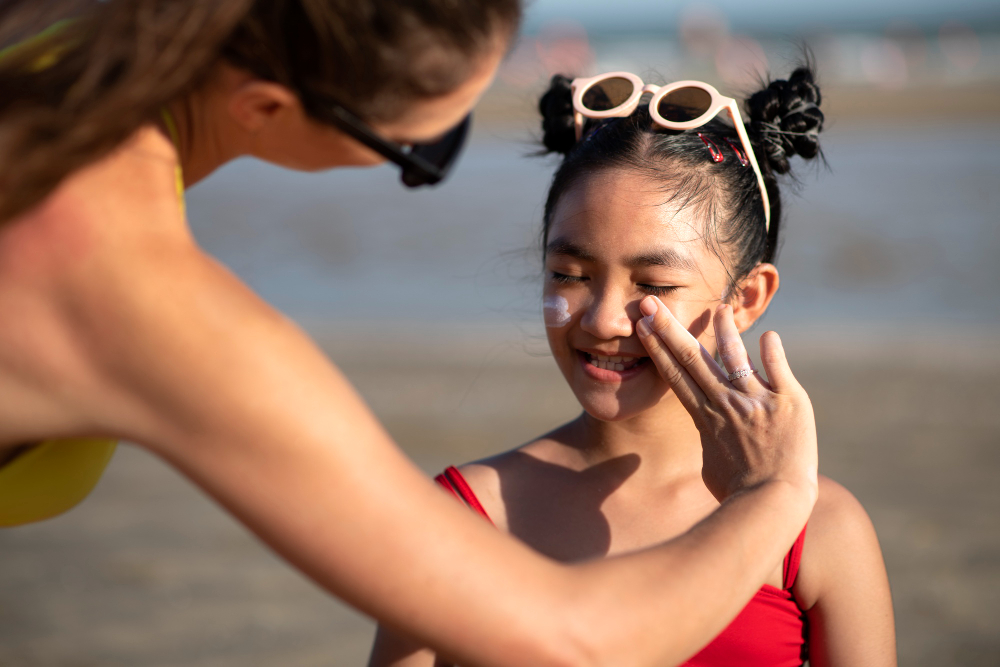SUNSTROKE: WHEN HEAT STROKE CAN MAKE YOU SICK
WHAT IS THE DEFINITION OF SUNSTROKE (HEAT STROKE)?
The human body relies on its thermoregulation system to regulate body temperature at approximately 36°C. When exposed to extreme heat, this system employs mechanisms like sweating to prevent excessive body temperature increase.
However, this system isn’t as effective in the elderly and young children, making them more susceptible to overheating during intense heatwaves. Other factors such as specific medical conditions or medications can also disrupt the body’s cooling mechanisms.
Even individuals in good health are not exempt from heat-related issues, especially when engaged in strenuous outdoor activities like exercising, gardening, or working in construction or seasonal jobs.
RECOGNIZE THE SIGNS AND SYMPTOMS OF SUNSTROKE
- Excessive thirst
- Dizziness or fainting
- Muscle cramps
- Skin rash
- Excessive sweating
- Rapid breathing and heart rate
- Nausea or vomiting
- Headache
- Reduced and darker urine output
In this stage, it’s crucial to help the person cool down, for instance, by applying a cold compress to their skin and providing fluids. However, avoid sudden cold showers to prevent thermal shocks.
Failure to take action promptly can escalate to heatstroke (sunstroke).
Heatstroke symptoms:
- High body temperature (40°C or higher)
- Absence of sweating
- Skin appearing red and extremely hot
- Confusion and loss of coordination
- Dizziness or fainting
Heatstroke is a medical emergency! Dial 911 immediately upon recognizing signs of heatstroke and follow the provided instructions until emergency help arrives (e.g., use cold compresses and create airflow as a temporary heatstroke treatment).
HOW TO PREVENT THE RISK OF SUNSTROKE?
The key to preventing heat-related issues is proper preparation and accurate information. If your home lacks air conditioning, ensure access to a cool, air-conditioned public space during heatwaves. Fans can offer some relief from the heat, but don’t forget sun protection.
Staying well-hydrated in hot weather is crucial, so drink cold water regularly. To stay cool, consider taking cool showers or baths and wear lightweight, loose-fitting clothing.
Consult your pharmacist to assess if any medication you’re taking could increase sensitivity to heat or dehydration, which raises the risk of heatstroke. They will guide you on any necessary precautions.
Don’t forget to check on your vulnerable friends or family members during heatwaves. If you have concerns, seek advice from a healthcare professional. If you have questions about sun protection, your beauty advisor or pharmacist is available to assist you. They are here to help.
Want To Know More

Sunscreens
Discover the characteristics of a good sunscreen to protect yourself against UVA rays
Read More

medication & Sunlight
Some medications can increase skin sensitivity to sunlight and cause allergic reaction
Read More

Skin Cancer
Skin cancer is a serious condition characterized by uncontrolled skin cell growth, often caused by UV radiation exposure. Understanding its risk factors, prevention, and early detection methods is crucial for protecting your skin health.
Read More

Myths about the sun
Some myths about sun and sunlight are hard to dispel. Lets discover the truth about seven common myths